Hedgerows revisited
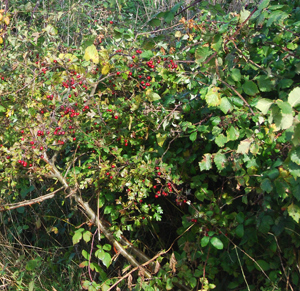
Many hedgerows were planted originally to keep livestock, such as sheep, cattle, pigs, chickens in specific areas. Some hedgerows were planted to define boundaries – ‘who owned which bit of land’. Hedgerows often surround fields. The word ‘field’ comes from Old English ‘feld’, meaning 'an area of felled trees / open country'.
The establishment of many hedgerows was associated with the process of enclosure; a change in land use from arable to pasture (for sheep). Open fields and common land were enclosed by hedgerows, over many years the landscape of England changed.
The C20th witnessed the opposite process, the removal of hedgerows for the creation of larger fields to accommodate larger machinery. In the decades following the end of the second Word War, it has been estimated that a quarter of a million miles of hedgerow have been ripped out / lost. Fortunately, there are now policies in place to halt or even reverse the loss of hedgerow. Hedgerows are recognised as an integral part of our landscape and play an important role in the maintenance of biodiversity. They provide habitats for a variety of animals and plants.
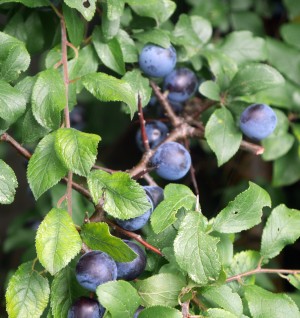 Many species of birds nest in hedgerows, such as song thrush, yellowhammer and tree sparrow. Different species favour different heights within the hedgerow. Some species nest near the ground such as wrens and dunnocks, whereas others nest higher up (eg. Bullfinches). The greater the variety of plant species in a hedgerow, the better the supply of pollen, nectar, fruits and seeds. Ivy for example will produce flowers late in the year and offers a source of nectar and pollen. Hawthorn, blackthorn and holly offer fruits in the winter months for birds and small mammals.
Many species of birds nest in hedgerows, such as song thrush, yellowhammer and tree sparrow. Different species favour different heights within the hedgerow. Some species nest near the ground such as wrens and dunnocks, whereas others nest higher up (eg. Bullfinches). The greater the variety of plant species in a hedgerow, the better the supply of pollen, nectar, fruits and seeds. Ivy for example will produce flowers late in the year and offers a source of nectar and pollen. Hawthorn, blackthorn and holly offer fruits in the winter months for birds and small mammals.
Hedgerows and hedges have to be be maintained. Such management may involve planting of trees or shrubs to fill gaps, coppicing, laying or cutting back.
However, the effects of pruning and cutting back during the bird-nesting season can be disastrous. Mechanical flailing of a hedgerow is fast, effective and the regrowth is generally slower, but its effects can be particularly bad on birds. They may abandon their nests and / or their eggs or chicks may be destroyed. The pruning / flailing may also reduce the insect populations of the hedgerow (or other other food sources) on which the birds depend. Hedge pruning maintenance is :-
- ideally undertaken outside of the nesting season. and
- only done every second or third year.
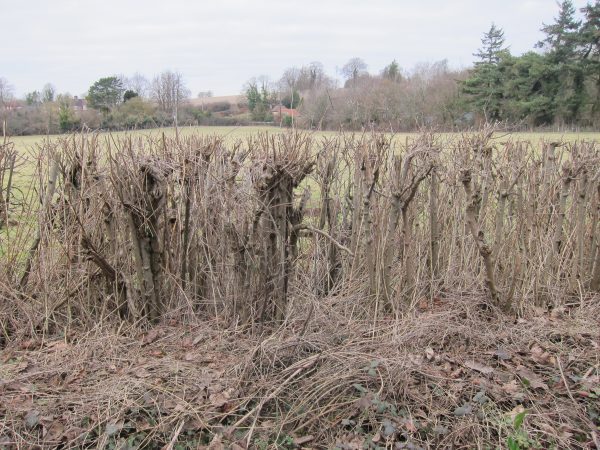
A flailed hedge
Hedgerows also support vital insect pollinators : butterflies, hover flies, moths and bees. These insects help with the pollination of crops such as oilseed rape, legumes and fruit trees. Other insects can 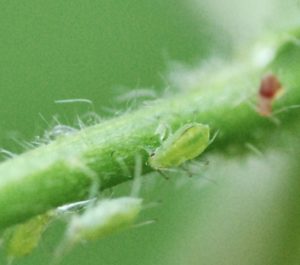 help with crop yields by predating upon crop pests, such as green fly and blackfly (these may spread viral diseases on crops such as sugar beet). Insects may overwinter in the hedgerow and move into the fields come the Spring, as the aphids start to increase in number.
help with crop yields by predating upon crop pests, such as green fly and blackfly (these may spread viral diseases on crops such as sugar beet). Insects may overwinter in the hedgerow and move into the fields come the Spring, as the aphids start to increase in number.
If trees are left in situ, they may achieve veteran status. Then their rough bark, cracks, holes and dead wood will support a diverse range of species. Owls, kestrels and bats may come to nest. There are also niches that offer opportunities for epiphytes, mosses and lichens. The dead wood may be home for saproxylic beetles. Hedgerows also act as corridors linking to other hedgerows, woodlands etc along which animals can pass (for example, hedgehogs and other small mammals).
![]()

- Hedgerows provide important wildlife corridors across agricultural landscapes.
- They provide food for insects, small mammals and birds (due to the range of plants and their different flowering and fruiting times).
- They provide nesting and roosting sites for birds and bats, and ‘homes’ for a variety of small mammals. Many insect species over winter in hedgerows.
- The trees and woody shrubs help with carbon sequestration.
- Hedgerows offer a windbreak, reducing wind speed and hence lowering soil erosion, they may also offer shelter to animal stock. The roots also help stabilise the soil.
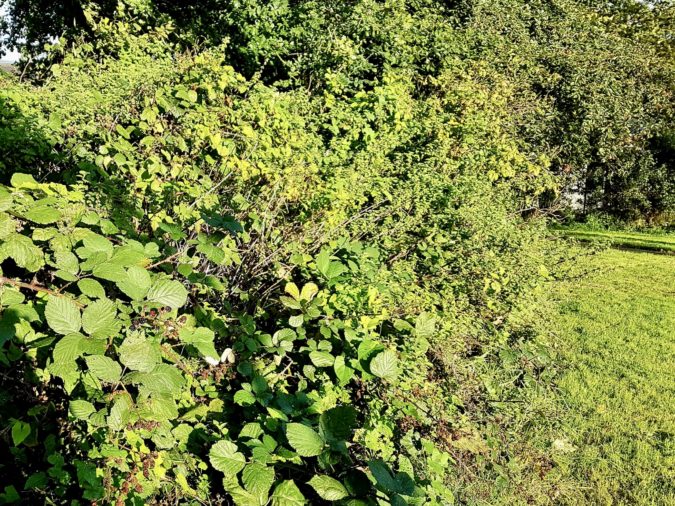
Hedge with beech, nettle, dog rose, brambles, hazel and ash - amongst others
Comments are closed for this post.
